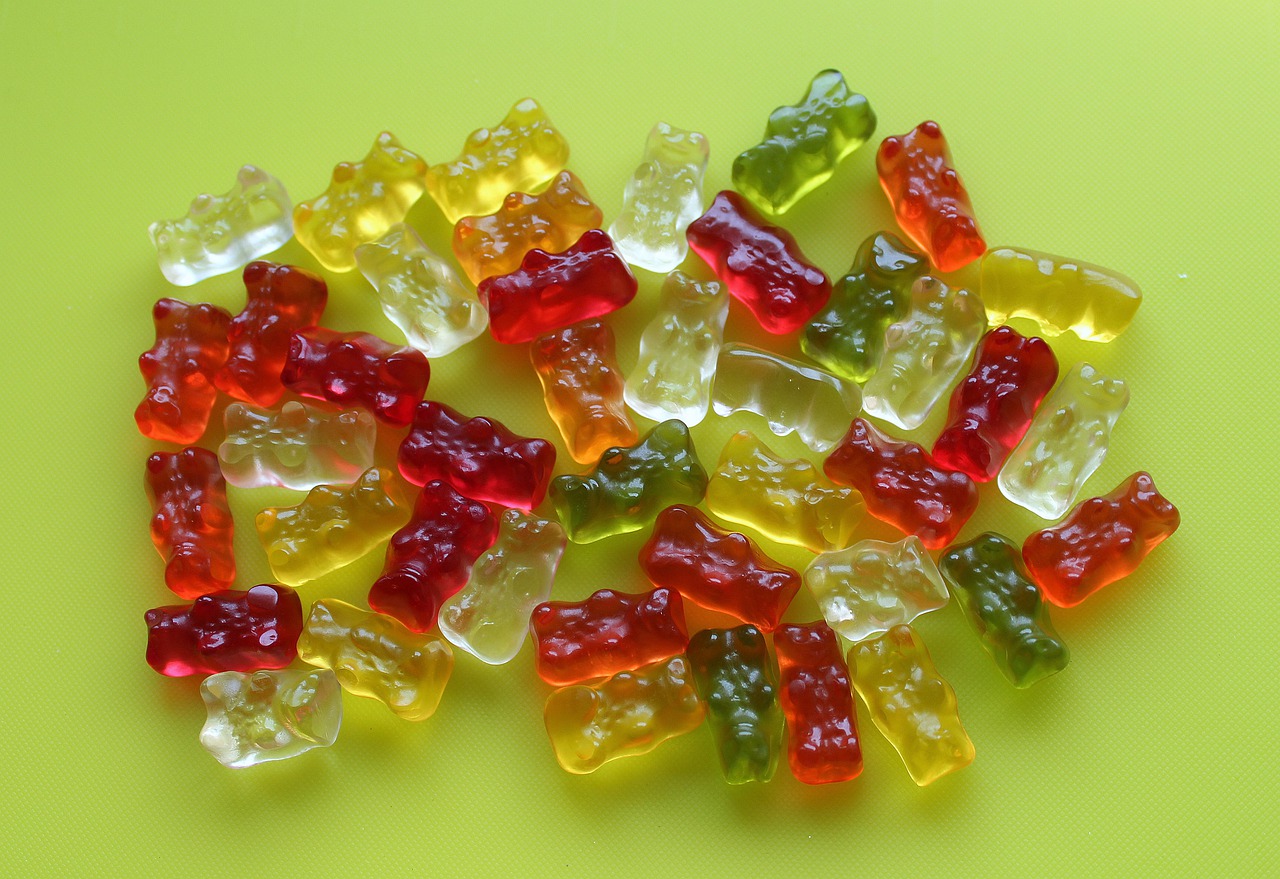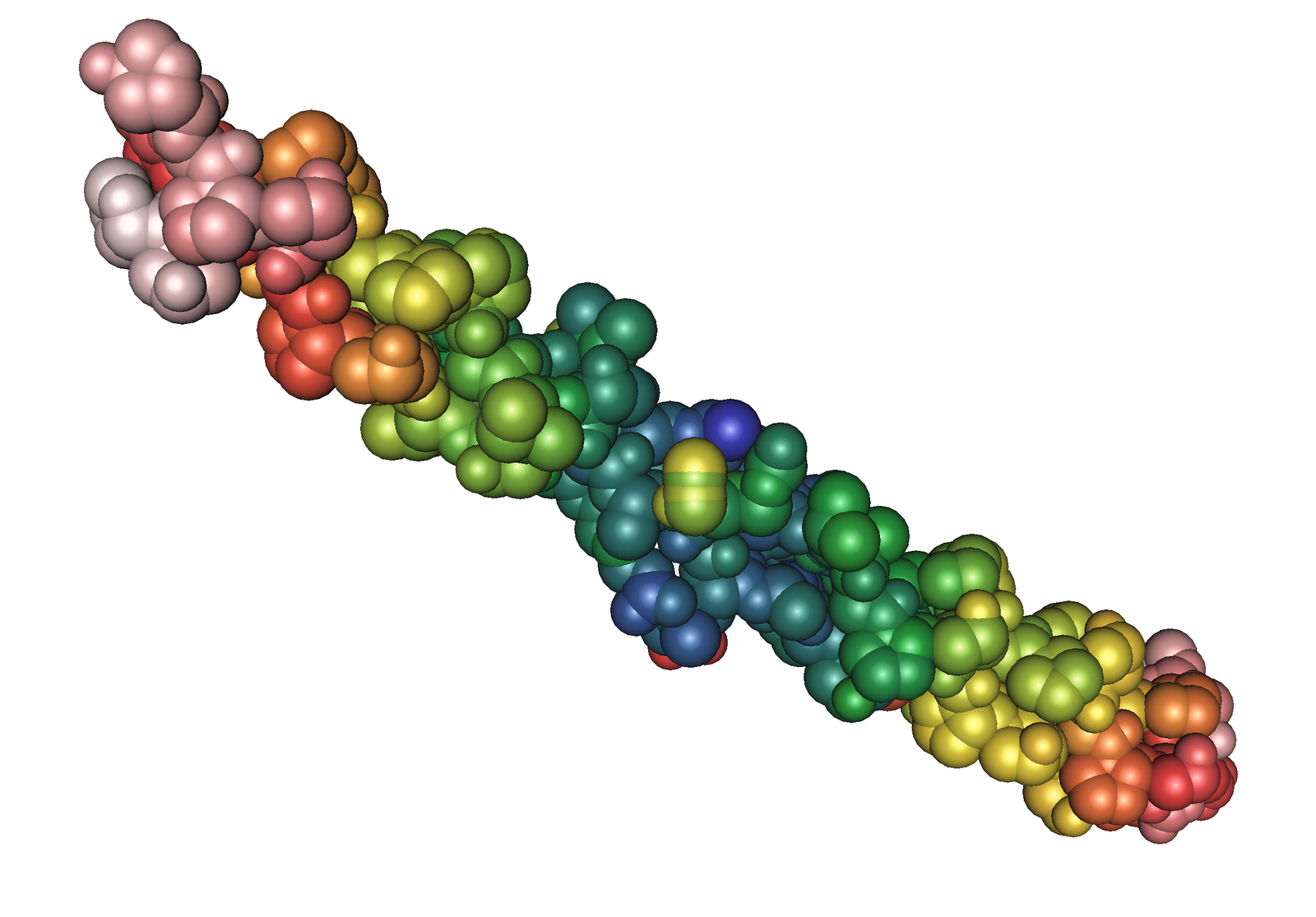Difference Between Gelatin and Collagen
Gelatin is a chemical substance that is formed when collagen is modified through various hydrolysis reactions. Collagen is a naturally occurring protein which contains much glycine and hydroxyproline residues, and that is found making up most of the connective tissues of the human body.

What is Gelatin?
Definition:
Gelatin is the chemical substance that is artificially formed when collagen undergoes a hydrolysis reaction to produce smaller peptide molecules.
Structure:
Gelatin is a colorless and translucent material that is soluble in water and consists of many peptides. It consists of glycine, hydroxyproline and proline residues. The gelatin can occur as a powder that stays in a stable form for a long period of time, but it is able to absorb large quantities of water making it a useful gelling agent.
Functions:
Gelatin is used in the food industry to make many types of products including sweets like gummy bears and jelly babies, and it is also used to form gelatin capsules and even as part of lozenges. It can also be added to foods like margarine to help thicken the material. It is considered a nutritious food item because it contains amino acid residues and it is derived from a naturally-occurring protein.
Formation:
The gelatin is a substance that is formed from collagen that is taken from animal connective tissues and then modified accordingly. Gelatin is not made naturally, but rather artificially through chemical reactions and transformations of the original collagen fibers. The gelatin can be made in various ways using either an acid or alkaline to treat animal skins, connective tissues or hides and then by boiling the material to complete the reaction in which the protein is broken down into smaller components.

What is Collagen?
Definition:
Collagen is a naturally-occurring protein, rich in the amino acid glycine that occurs in living organisms where it forms connective tissue fibers. It is also known to contain a lot of hydroxyproline in addition to the glycine, which is unlike other proteins that make fibers in connective tissue.
Structure:
The collagen molecule is made up of three polypeptide chains, which wind together to produce a helical form. The helix consists of two chains that are identical and one that is slightly different. There are many covalent bonds present between atoms in the polypeptide chains ensuring a strong three-dimensional structure to the protein.
Functions:
Collagen gives tensile strength and elasticity to the tendons and ligaments that occur at the joints of the body where bones and muscles come together. It is also an important fiber found in our skin helping to give the skin limited flexibility and strength. Collagen is the most abundant of all the connective tissue fibers that occur in the human body.
Formation:
The collagen protein is actually made inside living cells that are known as fibroblasts. After translation of the polypeptide chain, the proline and lysine parts of the chain have hydroxyl groups added to them, along with sugars such as glucose and galactose. In addition, scientists have found that some collagen can also be made outside of cells using enzymes to modify procollagen fibers.
Difference between Gelatin and Collagen
Definition
Gelatin is a substance that is made from collagen and consists of peptides of amino acids. Collagen is a substance consisting of three helical chains that contain a great deal of glycine and hydroxyproline.
Structure
Gelatin is comprised of pieces of peptides. Collagen is comprised of a triple helix of polypeptides.
Part of connective tissue
The gelatin is not a natural component of connective tissue. The collagen is a major natural part of connective tissues.
Commercial uses
Gelatin is often used commercially as a thickening agent and as a food additive. Collagen is sometimes used in surgical or medical reconstructions.
Made inside cells
Gelatin is never manufactured inside of living cells. Collagen is often manufactured inside living cells called fibroblasts.
Made outside cells
Gelatin is not made naturally outside of cells in the body. Collagen can sometimes be made naturally outside of cells in the body from procollagen substances.
Synthetic formation
The gelatin material is synthetically formed from collagen using acid, alkaline and boiling treatments of collagen. The collagen material is not synthetically.
Table comparing Gelatin and Collagen

Summary of Gelatin Vs. Collagen
- Gelatin and collagen are both protein substances which contain numerous glycine, proline, hydroxyproline residue groups.
- Collagen is complex in structure and consists of three helical chains.
- Gelatin is the broken down form of collagen consisting of smaller peptides of amino acids.
- Gelatin is formed synthetically from collagen through a series of reactions that involve alkalines or acids and boiling treatments.
- Collagen is the most abundant connective tissue fiber that is formed and found in the human body.
- The gelatin is useful in the food industry and as a thickening agent.
- The collagen is used in medical or surgical restorations.
- Difference Between Rumination and Regurgitation - June 13, 2024
- Difference Between Pyelectasis and Hydronephrosis - June 4, 2024
- Difference Between Cellulitis and Erysipelas - June 1, 2024
Search DifferenceBetween.net :
Leave a Response
References :
[0]Bogue, Robert H. "Conditions Affecting the Hydrolysis of Collagen to Gelatin." Industrial & Engineering Chemistry 15.11 (1923): 1154-1159.
[1]Brodsky, Barbara, and Anton V. Persikov. "Molecular structure of the collagen triple helix." Advances in protein chemistry. Vol. 70. Academic Press, 2005. 301-339.
[2]Image credit: https://commons.wikimedia.org/wiki/File:1bkv_collagen_02.png
[3]Image credit: https://pixabay.com/de/photos/gummib%C3%A4rchen-b%C3%A4ren-gelatine-gelee-3090177/
